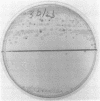Abstract
A new culture method employing a potassium hydroxide treatment was compared with the conventional cold enrichment method for efficacy in recovering Yersinia sp. from naturally and artificially contaminated food. The new method increased the yield of Yersinia sp. fourfold and the sensitivity 100-fold, shortened the incubation period, and appreciably decreased the growth of non-Yersinia bacteria from a variety of meats, shellfish, and vegetables.
Full text
PDF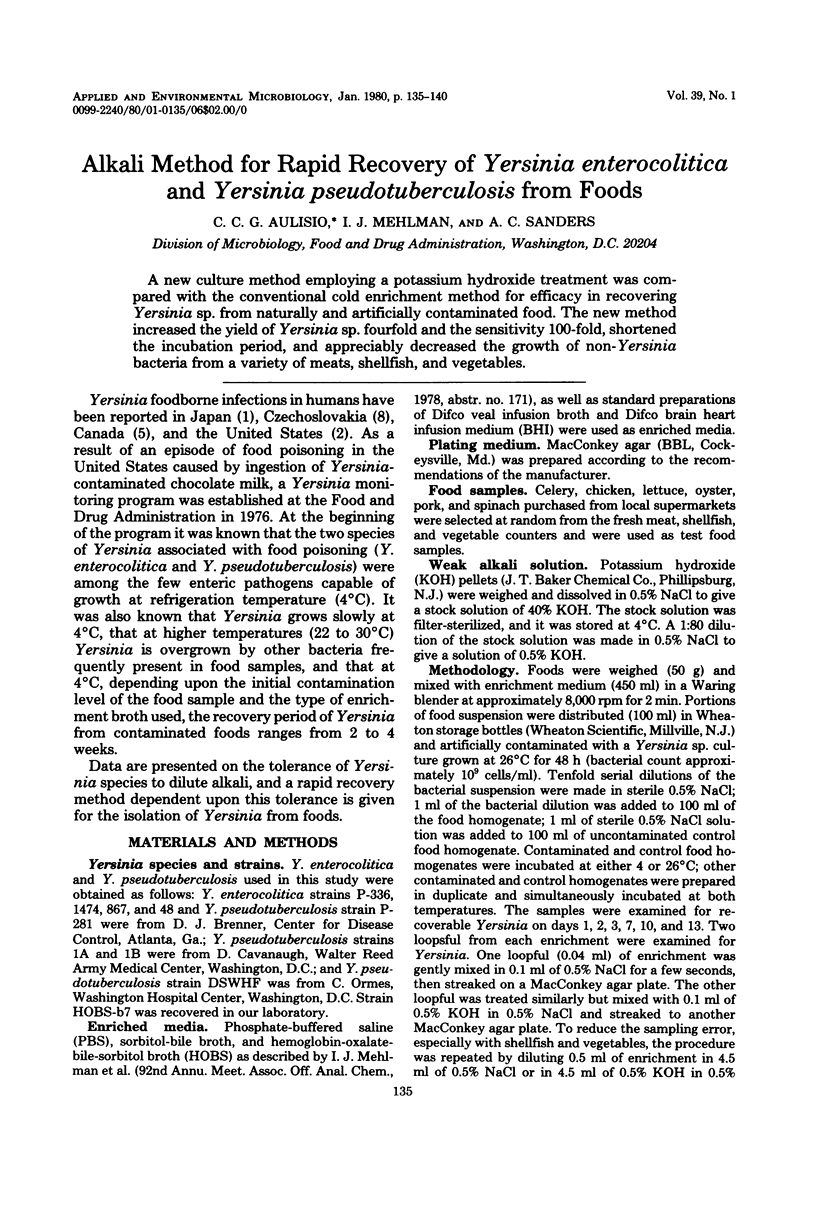
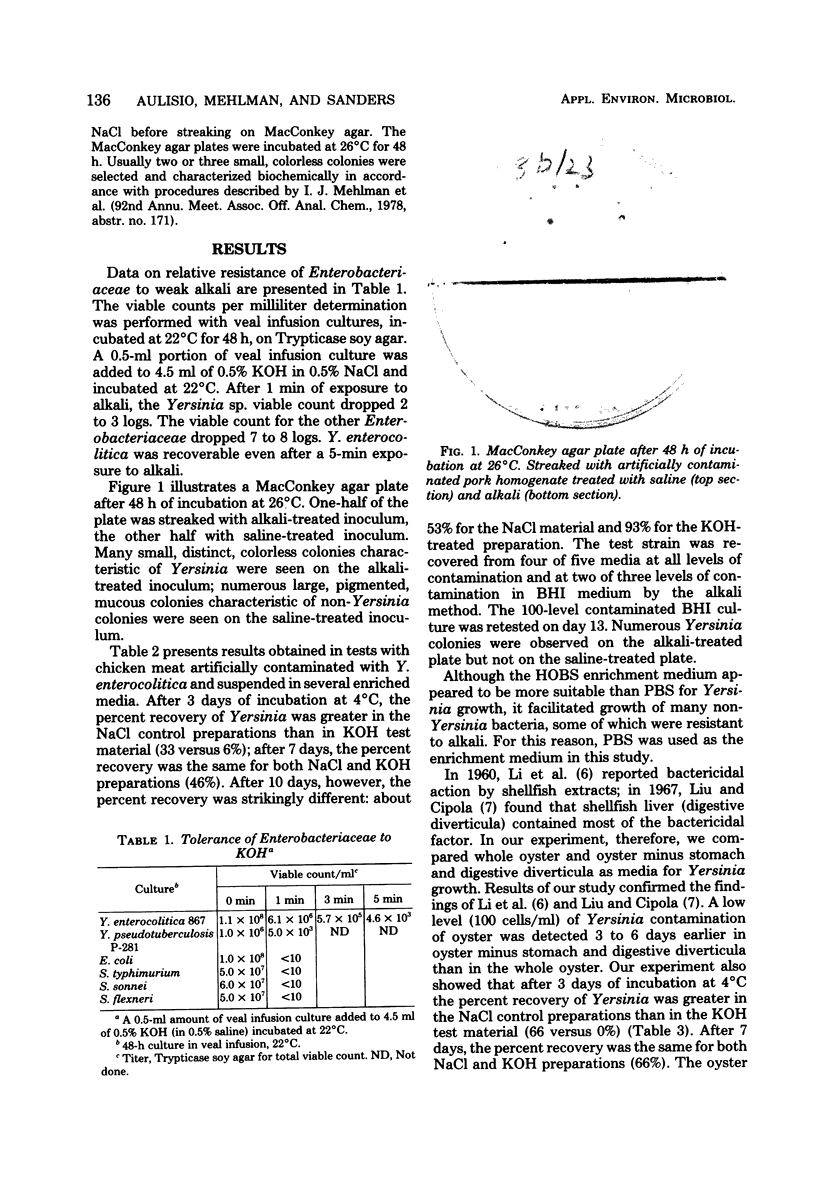
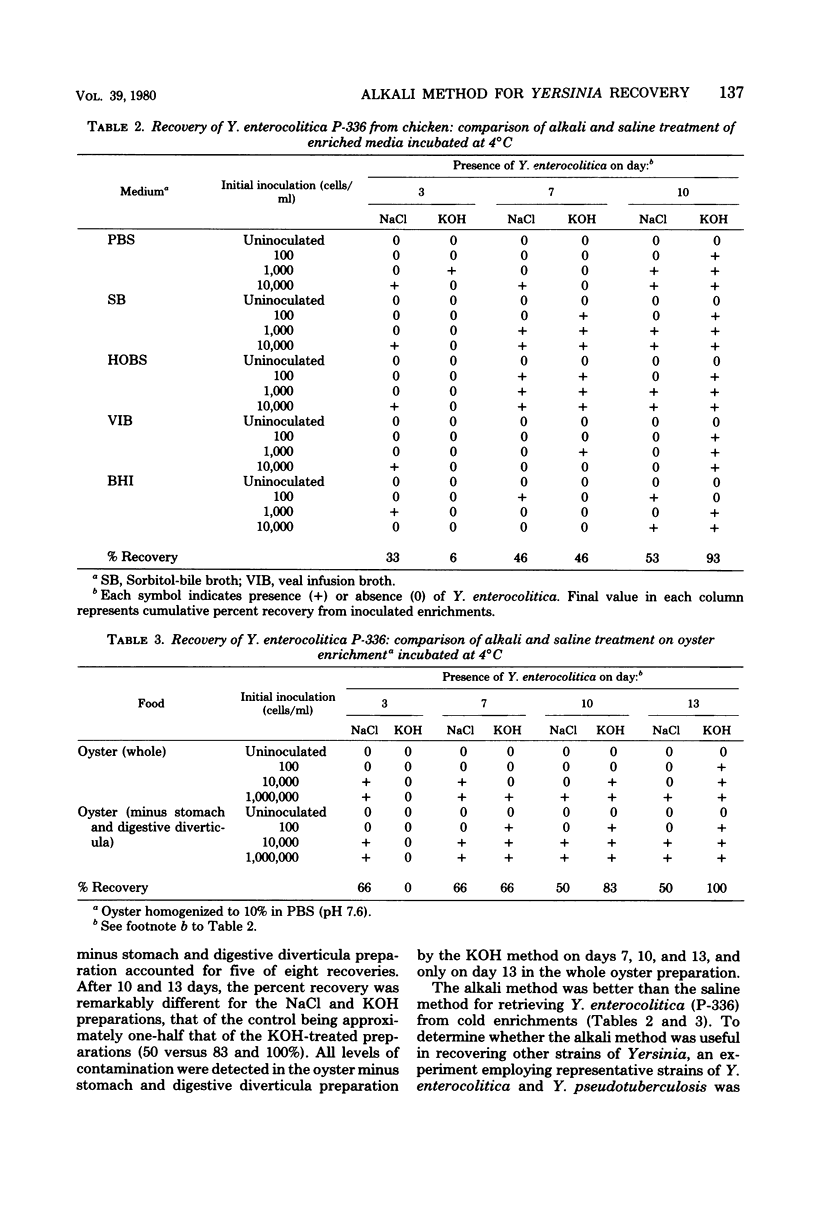
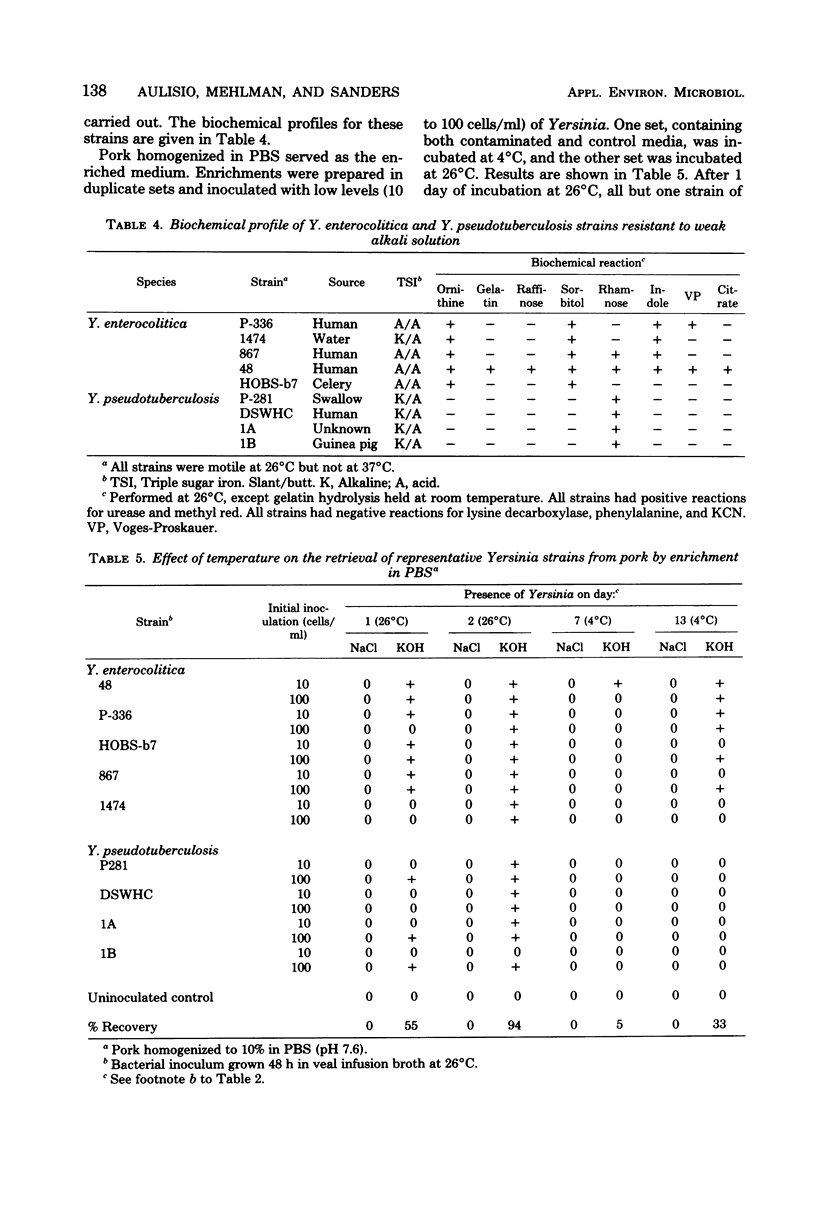
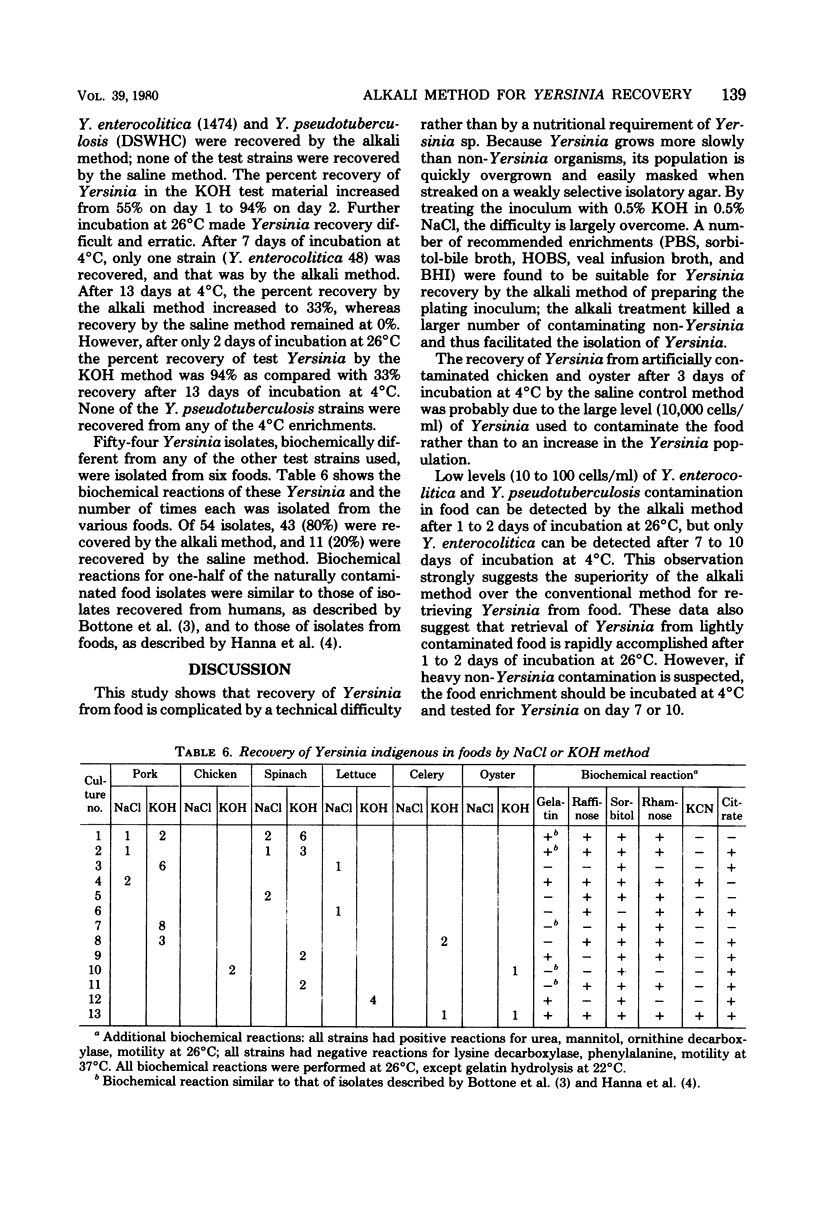
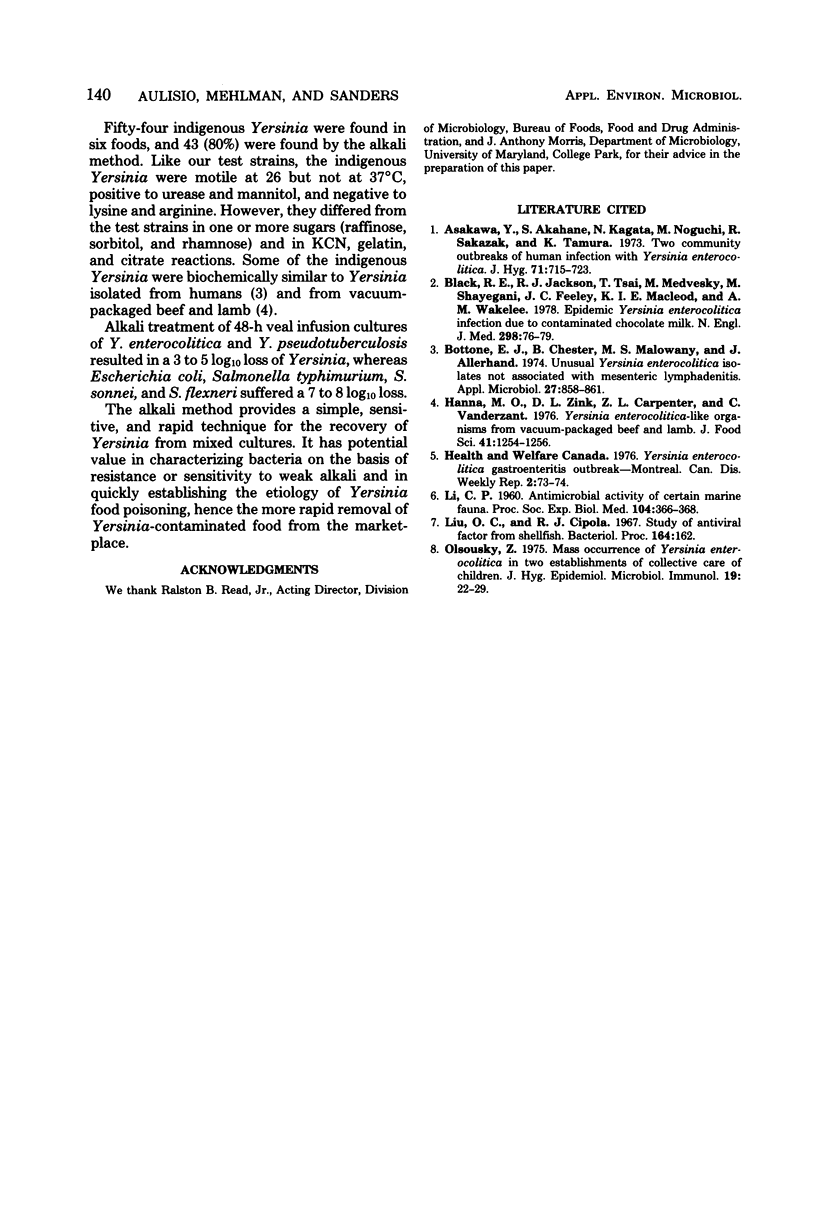
Images in this article
Selected References
These references are in PubMed. This may not be the complete list of references from this article.
- Asakawa Y., Akahane S., Kagata N., Noguchi M., Sakazaki R. Two community outbreaks of human infection with Yersinia enterocolitica. J Hyg (Lond) 1973 Dec;71(4):715–723. doi: 10.1017/s002217240002297x. [DOI] [PMC free article] [PubMed] [Google Scholar]
- Black R. E., Jackson R. J., Tsai T., Medvesky M., Shayegani M., Feeley J. C., MacLeod K. I., Wakelee A. M. Epidemic Yersinia enterocolitica infection due to contaminated chocolate milk. N Engl J Med. 1978 Jan 12;298(2):76–79. doi: 10.1056/NEJM197801122980204. [DOI] [PubMed] [Google Scholar]
- Bottone E. J., Chester B., Malowany M. S., Allerhand J. Unusual Yersinia enterocolitica isolates not associated with mesenteric lymphadenitis. Appl Microbiol. 1974 May;27(5):858–861. doi: 10.1128/am.27.5.858-861.1974. [DOI] [PMC free article] [PubMed] [Google Scholar]
- LI C. P. Antimicrobial activity of certain marine fauna. Proc Soc Exp Biol Med. 1960 Jul;104:366–368. doi: 10.3181/00379727-104-25839. [DOI] [PubMed] [Google Scholar]



